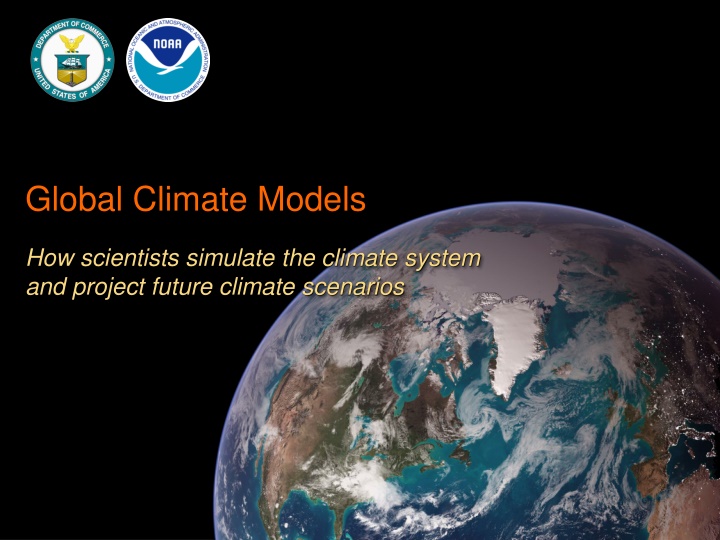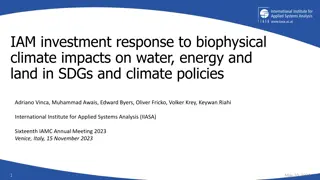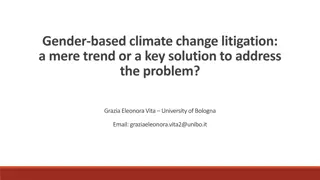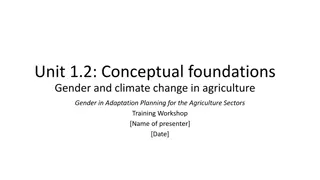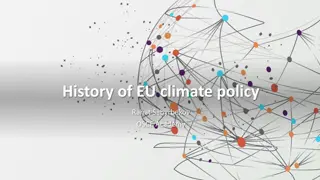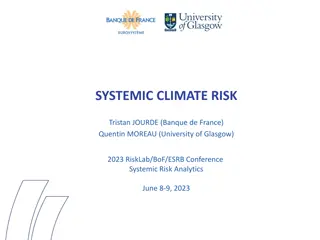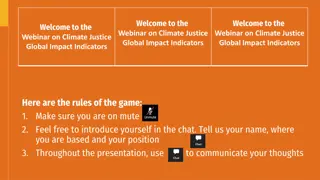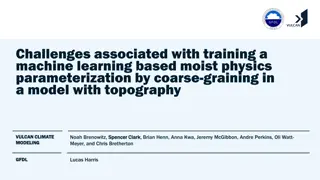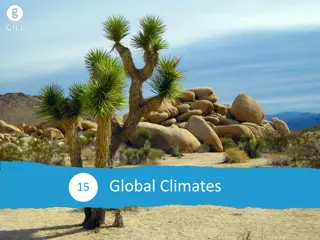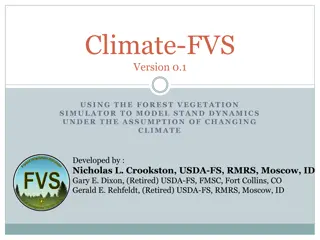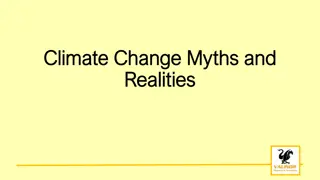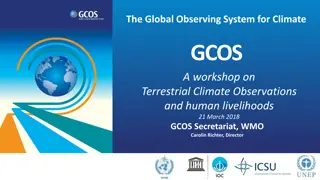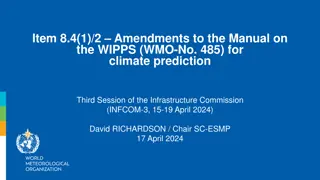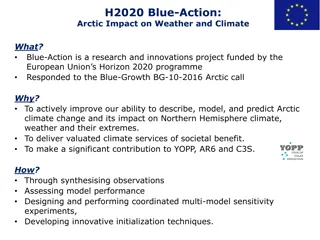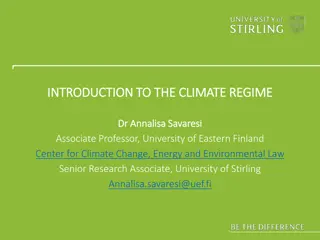Global Climate Models
Scientists simulate the climate system and project future scenarios by observing, measuring, and applying knowledge to computer models. These models represent Earth's surface and atmosphere using mathematical equations, which are converted to computer code. Supercomputers solve these equations to predict climate variables and simulate past climates for validation. Models that successfully approximate past climate conditions are used to project future temperature increases based on various carbon dioxide emission scenarios, with potential severe impacts on the environment. The IPCC models have successfully simulated climate conditions from 1900 to 2000.
Download Presentation

Please find below an Image/Link to download the presentation.
The content on the website is provided AS IS for your information and personal use only. It may not be sold, licensed, or shared on other websites without obtaining consent from the author.If you encounter any issues during the download, it is possible that the publisher has removed the file from their server.
You are allowed to download the files provided on this website for personal or commercial use, subject to the condition that they are used lawfully. All files are the property of their respective owners.
The content on the website is provided AS IS for your information and personal use only. It may not be sold, licensed, or shared on other websites without obtaining consent from the author.
E N D
Presentation Transcript
Global Climate Models How scientists simulate the climate system and project future climate scenarios
Scientists observe & measure all the factors that are known to influence Earth s climate 2
Scientists apply that knowledge to a scaled-down, computer simulation of the planet: a global climate model Modelers represent Earth s surface and atmosphere as a virtual world made up of interacting, three-dimensional boxes.
Physical characteristics and processes that occur in each box are cataloged
Mathematical equations that represent the physical characteristics and processes are entered for each box
Equations are converted to computer code and climate variables are set
A supercomputer solves all the equations, passing results to neighboring boxes and calculating the next set of initial conditions
Models are tested and refined by simulating past climate then checking how well the results match observations
Models that successfully approximate past climate are considered valid for modeling future scenarios
Climate models project temperature increases for various carbon dioxide emission scenarios Studies suggest that a further increase of only 2 F would lead to severe, widespread, and irreversible impacts on Earth s environment.1,2,3 IPCC models successfully simulated climate conditions from 1900 to 2000.
Research groups around the world have developed a range of respected climate models Modeling groups also work together, averaging results from their models with other models that used the same initial conditions. These multi-model results are called ensembles.
We can use climate models to link effects to their causes Temperature anomaly ( C) 1.0 0.5 0.0 2000 1900 1950 Observations relative to 1901-1950 average IPCC, 2007, SPM
Models predict how global average temperatures would have changed due to natural forces only Temperature anomaly ( C) 1.0 0.5 0.0 2000 1900 1950 Model predictions for natural forcings Observations relative to 1901-1950 average IPCC, 2007, SPM
Models attribute global warming mainly to human origins Temperature anomaly ( C) 1.0 0.5 0.0 2000 1900 1950 Model predictions for natural & human forcings Model predictions for natural forcings Observations relative to 1901-1950 average IPCC, 2007, SPM
The pattern holds true on every inhabited continent Model predictions for natural & human forcings Model predictions for natural forcings Observations relative to 1901-1950 average IPCC, 2007
